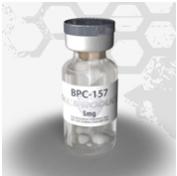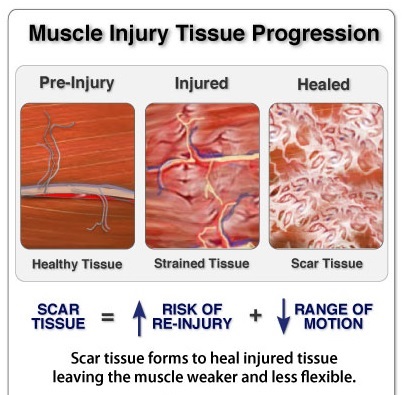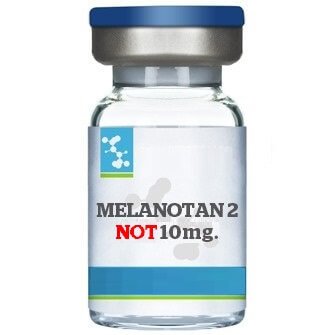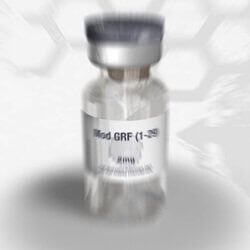IGF-1 Reverses Aging and Heals damaged brain cells
IGF-1 Reverses Aging and Heals damaged brain cells
by , 10th May 2016 at 04:56 AM (5775 Views)
Growth Hormone Production and IGF-1
The production of growth hormone is at its peak during the adolescence period. Most of the HGH is secreted into the bloodstream in brief-bursts manner. It also occurs during the early hours of deep sleep or REM. Once HGH is in the bloodstream, it stays there for a short period, perhaps in a few minutes or longer enough in stimulating its uptake into the liver, wherein conversion to growth factors happen. The Insulin Growth Factors (IGF-1) are the most important of all these growth factors, also called the Somatomedin C.
Furthermore, the growth hormone acts either indirectly or directly through the intermediary insulin growth factors to each organ system in the body. Hence, almost nothing is able to escape from its magic touch. Growth hormone is also capable of increasing the size of several organs and tissues, including the brain. Based on recent studies, involving animals as test subjects, HG has manifested the regeneration of damaged brain tissue.
IGF-1
Rather than the growth hormone itself, it is the IGF-1 that varies widely throughout the day and is used in measuring how much GH has been secreted by the body. Thus, the IGF-1 is responsible for the actions and benefits associated with HGH and is 10 times more potent than HGH. To date, HG is under investigation as a separate medication for its many indications similar to HGH. Phil Micans from the London-based International Aging Systems, believes that the IGF-1 will become the top choice among the hormones in just a few years.
HGH and IGF-1 for Anti-aging
Doctor Vincent Giampapa, the Clinical Research director of the Longevity Institute International, based in Montclair, New Jersey, said that the blueprint of aging is under the DNA’s hood of telomere, and considered as the “clock” at the end of each chromosome, which is shortened with every cell division.
Hence, reversing the aging at the cellular level is possible through a substance, which will restore the length of telomere. However, that substance is still unavailable. Giampapa strongly believes that the substance will be available in not more than a decade though. Until then, the growth hormone, along with its IGF-1 attendant hormone is able to perform the next best thing, assisting in keeping the cell as healthy as possible.
Overall, the ability and function of the cell largely depend on the DNA, the genetic material in the nucleus that codes for all the enzymes, proteins, and hormones that make it run. Thus, DNA is similar to an army under a consistent attack from ultraviolet light, body heat, oxygen free-radicals, and many other damaging factors. While the DNA has the ability in repairing itself, it still falls short with age, which is the same aging process that largely affects the cell. Simultaneously, damage accumulates in the cell’s mitochondria, the energy center, which has its separate DNA. Among the things to limit the DNA damage is the intake of antioxidant supplements like vitamins E and C in bolstering the body’s defenses.
According to Giampapa and a hormone replacement therapy specialist Thierry Hertoghe, the latest research in Europe indicates that human growth hormone and the IGF-1 could go farther than antioxidants, going beyond what antioxidants can do. All the more, HGH and IGF-1 can transport raw materials to the cells for repair and renovation.
IGF-1 can instigate the delivery of RNA, DNA and nucleic acids directly into the cell nucleus. Meanwhile nucleic acids are helpful in repairing the damage in the DNA, while stimulating cell division. Growth hormone, on the other hand, launches the transport of nucleic acids and amino acids into the cell’s cytoplasm, just outside the nucleus. In this process, the HGH and IGF-1 are not only able to minimize the DNA and cell stellar damage, but also treating the DNA and the cell. In all, both hormones can treat the blueprints of the aging process.
Primarily, the IGF-1 is the GH chain’s other end, the downstream player, which actually exerts the effects associated with the HGH. It is able to cause a great deal of excitement in two groups, including the researchers and the group of bodybuilders, who are both using the substance for individual purposes.
Meanwhile, the IGF-1 is said to be more potent than the HGH, as it latter exerts its effects through the former substance. Without a surprise, IGF-1 injections can do what HGH does, plus other effects in accordance with its proponents. IGF-1 can increase the lean body mass, while reducing fats, building bone, nerves, and muscle all at the same time. Through a direct intake, the pituitary gland is avoided, which could be burnt out throughout the aging process.
Anti-Aging Action – When it comes to the anti-aging efforts, the iGF-1 is said to be more potent than the HGH. Doctor Keith Kelly conducted a research work, indicating that growth hormone was able to reverse the shrinking of the thymus. According to Kelly, only the IGF-1 worked, and not the GH that worked in his experiment on cells in culture. However, both GH and the IGF-1 worked on living animals, saying that both substances are significantly elevated in the older test subjects as they were treated with growth hormone. He predicted that IGF-1 would be the main player though.
Disease and Brain Aging Prevention – Among the other spectacular uses of GH and IGF-1 is their ability to prevent the effects of brain aging, not to mention their capacity to treat such condition. Based on an experiment, the substances manifested momentous implications for stroke, brain injury, neurodegenerative disease, and aging. A team of scientist based in New Zealand said that IGF-1 can halt the death of cells in the brain.
Peter Gluckman, Barabara Johnston, along with their colleagues at the University of Auckland discovered that IGF-1 injections administered in two hours, following brain injury in baby lambs were able to rescue the damaged neurons, salvaging cells that would have died during apoptosis, the programmed cell death. Apoptosis is the brain cell loss that occurs for up to three days upon the initial injury.
In all, the treatment was very effective in stopping the death of brain cells in areas such as the cortex, hippocampus, and other areas linked with the memory and thinking. Results also manifested in the striatum, the brain area that is associated with the Parkinson’s disease in human. Hence, IGF-1 replacement reduced seizures in animals suffering from brain damage.
The researchers further suggest that IGF-1 could be used in preventing the effects of neonatal hypoxia lack of oxygen in the brain that occurs during birth. This condition could leave a baby suffering from permanent brain damage. This ability of the IGF-1 only opens doors for more possibilities, such as the reversal of the programmed cardiac cell death, following a heart attack, which can cause a victim with a heart full of dead tissues.
Keep in mind that the stroke can destroy the brain tissue, and as the cells die, the victim of a stroke is left unable to talk, walk, or think clearly. This also plays a significant role in many other neurodegenerative diseases like muscular dystrophy, Alzheimer’s disease, and multiple sclerosis (MS). For the very first time, there is a considered weapon or treatment against death at the cellular level.
Improvement of Glucose Metabolism – Similar to insulin, the IGF-1 has the same properties with the former as it can also improve the blood sugar profiles of patients with Type 2 diabetes. An increase in insulin resistance is manifested through high doses of GH, but the administration of IGF-1 can actually regulate the insulin resistance.
Researchers Bernard Beaufrere and Nelly Mauras from Jacksonville, Florida’s Nemours Children's Clinic studied several things, including the effect of IGF-1 on protein metabolism as the substance has the ability to halt protein-wasting brought about by glucocorticosteroid drugs such as prednisone, as well as its effects on glucose and insulin metabolism. The researchers divided the group of volunteers into three: IGF-1 alone, Prednisone alone, and IGF-1 plus prednisone.
The study discovered that 100 micrograms of IGF-1 per kilogram of body weight that was administered twice a day, was able to enhance the protein metabolism of the body, in the same manner as growth hormone. IGF-1 decreased the protein breakdown among the subjects who took prednisone, whereas, GH in an earlier research resulted in insulin resistance and carbohydrate intolerance when administered with prednisone did not cause diabetes-like effects. Rather, the volunteers who received IGF-1 with prednisone had a regular glucose metabolism.
The researchers said the discovery was remarkable in line with the glucocorticoids as they are known to curb insulin circulation and decrease insulin sensitivity as well. Due to this discovery and other researches, the experts now believe that IGF-1 promises treatment for protein catabolic states, such as in patients who need IV feedings after a surgery.
Helping Diabetic Patients – Two double-blinded clinical researches in 1997 also showed that recombinant IGF-1 injections could reduce the need for insulin remarkably, up to 45% in people suffering from diabetes mellitus, and who are insulin-dependent. One particular study involved eight adults aged 24 to 49, the other group was 43 children and adolescents aged 8 to 17. IGF-1 resulted in an overall lower cholesterol and triglyceride levels in the adult trial, after four days of IGF-1 treatment.
The clinical trials were only short-term, which lasted for 19 days and four weeks respectively. The insulin requirement that dropped remarkably, without serious side effects indicated that IGF-1 is a promising drug for diabetes treatment. Although it does not do away with insulin requirement, IGF-1 improved the blood sugar control, preventing further complications brought about by the disease, like blindness, peripheral nerve damage, and heart disease.
Nerve Regeneration – Furthermore, IGF-1’s potentials also include its ability in repairing the peripheral nerve tissue, which have been damaged by illness or injury. A torn nerve means that a connection to the muscle is damaged, resulting in loss of movement, along with muscle deterioration. To some extent, peripheral nerves could regenerate, but severe tears of over a few millimeters can lead to permanent injury. IGF-1, however, can repair and reconnect severely injured nerves up to six millimeters, a truly remarkable ability.
Hans-Arne Hansson, a Swedish scientist and works at the Institute of Neurobiology at the University of Goteborg, discovered that IGF-1 combined with other growth factors can stimulate a more drastic regeneration. Hansson added that IGF-1 itself, and when combined with further growth factors is likely to promote further repair and healing process.
In addition, IGF-1 has also shown significant effects on the spinal cord motor neurons, involving studies of cells in animals and culture. The motor neuron activity in the spinal cord cultures had increased by 150% up to 270%. The programmed death of cells in developing chick embryos also decreased in a relative manner. The substance also enhanced the emergence of axons of the spinal cord motor neurons in animal studies, while increasing intramuscular nerve sprouting in normal adult rats. A team of researchers at the Cephalon, Inc., West Chester, Pennsylvania said IGF-1 could be the “long-sought endogenous motor neuron sprouting factor."
In all, the implications of IGF-1 are not mind-boggling at all as it is highly capable of regenerating the spinal cord motor neurons, which is helpful in the treatment of amyotrophic lateral sclerosis (ALS), a health condition that results in the loss of cortical motor neurons and spinal cord neurons that lead to paralysis, and even death. It could likewise help in treating Charcot-Marie-Tooth syndrome, among the peripheral neuropathies conditions.
Apparently, Doctor John Wittig of the UCLA has been using the substance in preventing AIDS wasting among HIV-infected patients. The substance allows more aggressive chemotherapy in certain patients because drugs like Crisplatin and Vincristine at higher doses could lead to peripheral neuropathies.
Network of Growth Factors
Among the body’s growth factor army, the IGF-1 is now identified, isolated, and cloned through a genetic engineering technology for drug use. Doctor Eric Dupont, a growth factor researcher said, GH is equivalent to the general, while the growth factors are the foot soldiers in the army. Growth factors act as hormones, hooking onto the cell receptors, while sending biochemical signal throughout the cell’s interior. On the other hand, hormones generally send a long distance message. Most of the growth factors make the local calls.
IGF-1 as Every Bodybuilder's Dream
To date, many world-class bodybuilders are making use of IGF-1. They have reported massive muscle magnification, up by 20 pounds. Muscle Mass 2000 is an article, trumpeting IGF-1 as the most possible and most potent bodybuilding drug ever. T.C. Luoma, the author of the article said that IGF-1 is widely available in America at the moment, while sold in Venice out of the trunks of cars. In Southern California gyms alone, IGF-1 is discreetly sold in brown paper bags. There are still no supporting evidences of the bodybuilders’ claims, but the anecdotal evidence is certainly building up.
Luoma added that bodybuilders have been testifying their IGF-1 experiences, indicating 5% drop in their body fat, in only a month. The users also testified that their lean body mass increased, and their strength became more incredible. In a particular statement, it indicated that the IGF-1 is the most wonderful thing in the world. On the contrary, there are skeptics like Doctor Mauro Di Pasquale, a performance-enhancing compound expert, although there is a basis for the belief on the capacity of IGF-1 taken with HGH.
Over and above, there is a feedback mechanism between the HGH in the pituitary gland and the IGF-1 in the liver. HGH stimulates the IGF-1 release; however, there could be a rise of IGF-1 levels at a certain period in the circulation. This signals the shutdown of GH. Thus, there is a lag time throughout this process, and indication that growth hormone levels rise at night time, while IGF-1 levels rise in the daytime. Now, bodybuilders are hoping that through growth hormone and IGF-1, the effect on protein synthesis may be doubled as well.
Bottom Line
Growth hormone, most especially its army of growth factors such as the IGF-1 is widely used by bodybuilders, optimizing its bodybuilding effects, including the remarkable anti-aging reversal ability of the substance. Clinical trials have also shown IGF-1’s capability in treating various ailments like cancer and diabetes.



 Rate this Article
Rate this Article
 Email Blog Entry
Email Blog Entry








